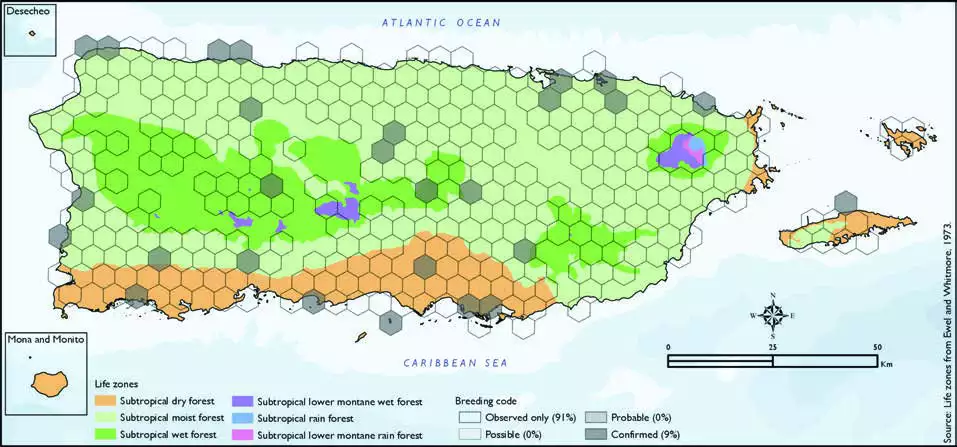Cattle Egret
Description
The cattle egret (Bubulcus ibis) is a cosmopolitan species of heron (family Ardeidae) found in the tropics, subtropics, and warm-temperate zones. It is the only member of the monotypic genus Bubulcus, although some authorities regard its two subspecies as full species, the western cattle egret and the eastern cattle egret. Despite the similarities in plumage to the egrets of the genus Egretta, it is more closely related to the herons of Ardea. Originally native to parts of Asia, Africa, and Europe, it has undergone a rapid expansion in its distribution and successfully colonised much of the rest of the world in the last century.
Threats
Pairs of crested caracara have been observed chasing cattle egrets in flight, forcing them to the ground, and killing them.[62]
Distribution & Habitat
The Cattle Egret occurs throughout temperate and
tropical regions of the world
(Raffaele and others 1998). It is
a common permanent resident
species in Puerto Rico (Oberle
2018, Raffaele 1989a) and fairly
common in Vieques (Gemmill
2015). It has also been reported
in Mona and Desecheo (Ventosa-
Febles and others 2005). The
species is a relatively recent
arrival from Africa from which
it colonized South America and
the Caribbean, and arrived in
Puerto Rico in the late 1940s
and early 1950s (Arendt 1988). This species occurs in pastures
where livestock are grazing
or tractors are cutting grass or
plowing (Raffaele and others
1998), grassy roadsides, and
landfills (Oberle 2018). The atlas
fieldwork yielded a total of 560
records within 305 hexagons
or 64 percent of the 479 total
hexagons (see map). Of the 305
hexagons where this species
was found, breeding met the
atlas definition of confirmed in
9 percent (27), while the species
was observed in 91 percent (278)
of the hexagons but without
evidence of breeding (see map). Cattle Egret distribution. The map shows the highest breeding code by hexagon and overlaying the ecological life zones in
Puerto Rico. Note: percentages may not total 100 due to rounding. 155Cattle Egret/Garza Ganadera

Breeding Habits
The Cattle Egret forms large colonies during the breeding
season and constructs a bulky
nest of twigs in a tree (Raffaele
and others 1998). Nests can be
found in different habitats or
ecosystems including swamps,
creeks, lagoons, and even
offshore cays (J.A. Salguero-
Faría, personal observation
2009). Breeding season may
vary, ranging from January to
July, according to previously
published reports (Oberle 2018,
Raffaele and others 1998). Atlas results show that the Cattle
Egret breeding season extends
from January to July (see chart).
Results show that the Cattle Egret
breeds within the subtropical
moist forest life zone (67 percent
of the hexagons), the subtropical
dry forest life zone (26 percent
of the hexagons), and the
subtropical wet forest life zone
(7 percent of the hexagons) (see
table and map).
Conservation
The Cattle Egrets overall population is increasing, and it is listed as a species of least
concern by the IUCN (BirdLife
International 2019). Locally, this
species is not listed in any of the
threatened categories of PRDNER
and USFWS. In Puerto Rico,
the Cattle Egret has a protected
habitat in land of 9 percent or
57 km2 of the total area covered by the hexagons where evidence
of breeding was found for this
species (646 km2).
Related Species
Family:
heron